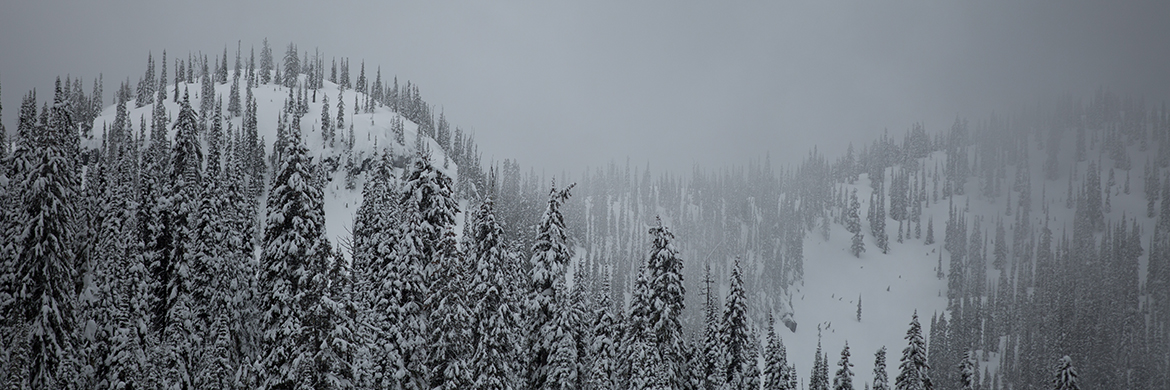
Climate
Jasper National Park
With the onset of a warmer, drier climate following their last major advance, the retreating glaciers left exposed a barren and raw landscape. Soon plants and animals began to take advantage of these newly-exposed expanses, infiltrating the mountain valleys from ice-free areas. Some of these organisms invaded from regions to the south that had remained unglaciated. Other organisms arrived from their unglaciated mountain peak refuges, islands of rock that the glaciers had failed to cover.
The climatic conditions of areas adjacent to melting glaciers were far from ideal for survival, but the constant glacial winds kept nearby valley bottoms mostly snow-free and the melting ice provided an abundance of water. Grasses and other hardy, cold-resistant species of vegetation soon took root in glacial silt and colonized the open spaces. Once this food source was established, large mammals such as bison, elk, deer, bighorn sheep and mountain goats gained a foothold.
As time passed, the climate continued to moderate. The glaciers dwindled and disappeared from all but the higher areas near the continental divide. As the annual cycle of growth and decay in the grasslands broke down the rock rubble and built up nutrient-rich soils, trees took root and spread through the valleys. During the warmest periods, between about 7000 and 3500 years ago, it is likely that grasslands and drier forests dominated, at least at lower altitudes. This combination of climate and habitat encouraged the growth of bison, elk and mountain-sheep herds.
More recently, during the Little Ice Age (from about A.D. 1200 to 1850), the onset of cooler temperatures and higher snowfall initiated a minor advance of the glaciers from their mountain strongholds. These colder conditions pushed treelines lower and permitted cold-tolerant spruce and fir forests to dominate the mountain slopes, much as they do today. Caribou, moose and bison, all species adapted to travel in deeper snow, frequented much of the area, while elk and deer were confined to the grasslands still covering the bottom lands of the lower Athabasca Valley and the slopes of the drier front ranges.
During the past 150 years the climate has continued to fluctuate. Vegetation patterns have responded to its changes. Occasional severe winters, drought and periodic fire have played their part in shaping the ecology of the mountain regions. Numbers of animals, not to mention numbers of humans, have all been affected by the prevailing climate.
Although the Pacific Ocean lies several mountain ranges to the west, ocean winds influence much of Jasper's weather and contribute to the forces of change in the mountains. The winds rush up and over the main ranges. Moisture-laden clouds dump metres of snow and water in highlands such as the Columbia Icefield. Drier winds flow northeast down the Athabasca Valley, lifting sand and silt and sweeping slopes bare in their wake.
When the dominant west wind falters, Arctic fronts sweep in from the north and east and the temperature plummets. The park's northerly location and distance from the ocean make the climate of Jasper National Park 'continental', with long, cold winters and short, warm summers.
Related links
- Date modified :